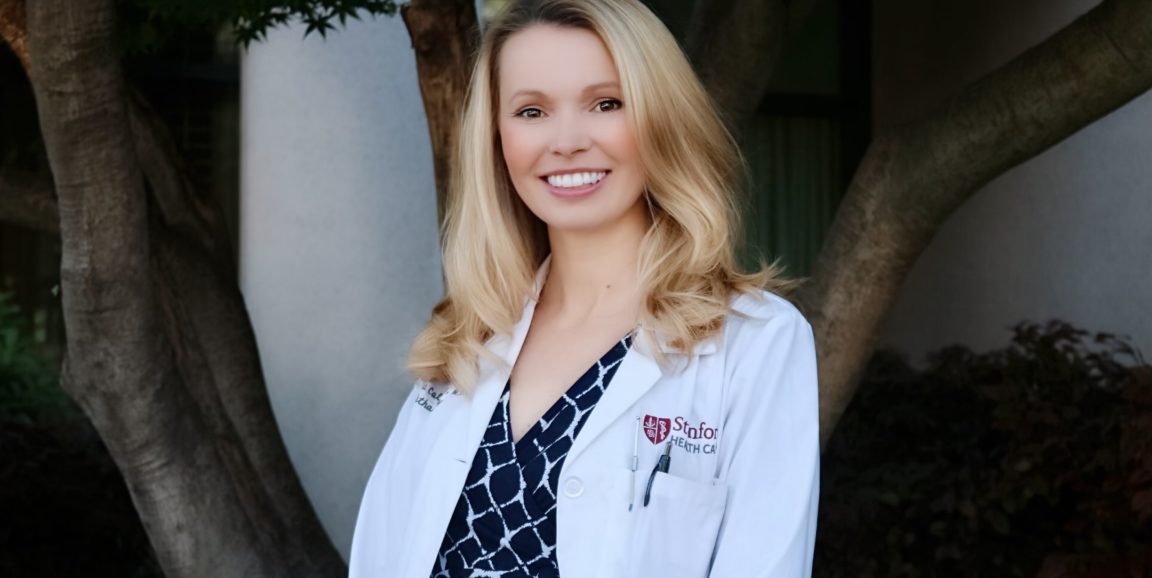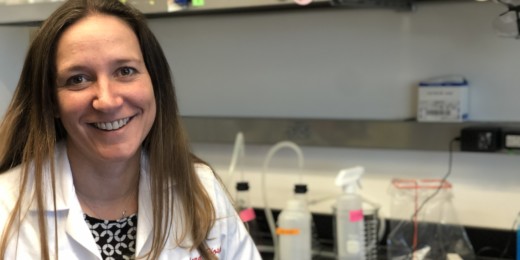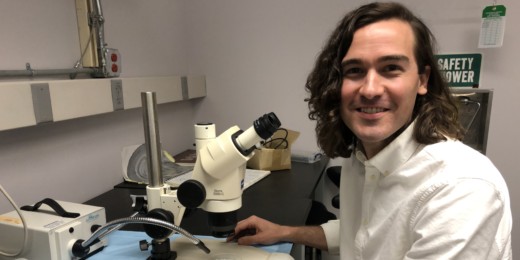Natalia Callaway, MD, is a vitreoretinal surgical fellow. That is, she specializes in treating conditions that affect structures in the eye called the retina and the vitreous (areas that have a lot to do with the way we process visual stimuli). As we spoke about her clinical and research pursuits, I learned Natalia also recently had her second child. While this all certainly keeps her busy, it's clear she wouldn't have it any other way.
Here's a look into our conversation:
I came to Stanford for medical school 10 years ago. I did a combined MD/master's degree in epidemiology and biostatistics. I left for residency, but then returned for my vitreoretinal surgical fellowship.
I grew up in Northern California, and originally immigrated from Poland. I went to Johns Hopkins University in Baltimore for my undergraduate studies. Basically, I've been all over the place.
In undergrad, I fell in love with science and research, and was trying decide between getting an MD or PhD. But as I gained experience in the lab, I realized that the reason I was originally drawn to medicine was because I loved interacting with patients and being on the forefront of medicine.
So, I went down the MD path. Then in med school, I discovered a specific sector of research that would be a perfect fit for me to pursue: clinical research. That, however, required a specific skillset. So, I thought it would be a valuable use of one extra year to learn more about clinical research. The master's program did an amazing job of giving me a broad scope of training in epidemiology -- especially showing me how to conduct meaningful clinical research ethically and safely, as well as how to design and execute sound epidemiological studies. Every day in my work, I am grateful for the foundation of knowledge I gained from the program; it will allow me to have a career that combines both clinical research and being a physician working with patients.
Half of my days I'm in clinic, and the other half I'm in the operating room. My fellowship has an allocated research day every week, and today was that day, so this morning I had a few research meetings. I'm working on research to understand gender and sex differences in ophthalmic disease and health care outcomes in ophthalmology. I'm also looking into pediatric retinal disease outcomes -- which I've had a long-standing interest in -- and I continue working on telemedicine research, as well. I'm working with multidisciplinary groups on these projects and really enjoying having time to develop these ideas and bring them to fruition.
As an ophthalmologist and surgeon, part of the reason I went into the field is because it is so fulfilling on a daily basis. Treating people with injections, or lasers, or surgeries, they often have improved vision by the very next time I see them, and that's incredible. For them, it's a massive improvement in their quality of life -- seeing their grandkids, or seeing themselves in the mirror, or being able to get their driver's license back -- so there's this daily joy and satisfaction.
Now as a fellow, I've also experienced a new type of fulfillment watching students, residents and researchers learn and grow. Mentoring in the clinical, research or personal realm has also brought me great fulfillment, and working with such amazing young stars at Stanford is truly a privilege. I'm constantly impressed by the students and residents, and they inspire me to be better!
I actually met my husband here at Stanford. He's in the Graduate School of Business, and we met by chance when he helped me move my furniture into an on-campus house when I was in medical school. We had our first child when I was in my ophthalmology residency, and I'm now pregnant with our second daughter.
Having a family while pursuing my career has been challenging -- I can't deny that. It requires a lot of hard work and prioritization, sacrifice, and confidence in living life by your priorities; but I'm a firm believer of choosing your own destiny. It's a special thing to be a young physician and build a family at the same time. Of course, the two things always coincide, but I keep going. And I always make it work.
Right now, I try to disconnect and spend time with my daughter during most of my free time -- like chasing her around the park and reading with her. Once she falls asleep, almost instantly, I'll do some type of fitness, because it helps me clear my mind and relax. It used to be volleyball and Pilates, but during pregnancy it was power walking. I'll also spend time with my husband and catch up about our days.
I always try to remind myself that "Rome wasn't built in a day." Things take time -- especially those worth achieving -- and daily acts of discipline are the best way to inch forward toward seemingly formidable goals. My favorite coffee mug mantra is "Good things come to those that hustle."
Photo by Kathryn Sill






